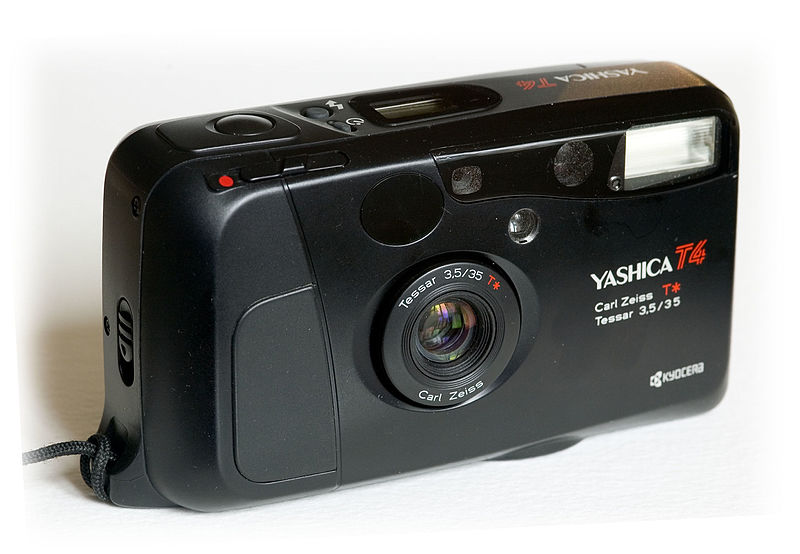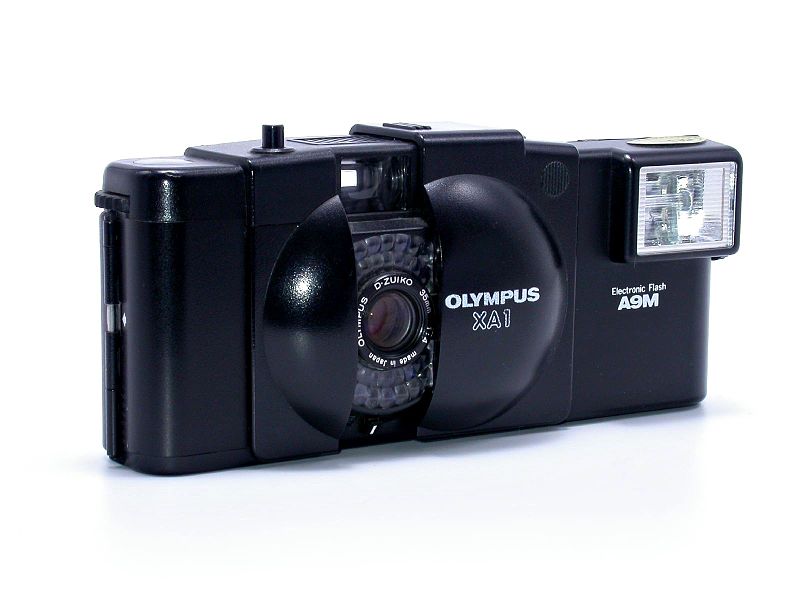
Welcome to our comprehensive guide tailored to aid you in selecting the perfect film for your Olympus XA1. Launched as a more simplified and cost-effective alternative to its predecessor, the Olympus XA, the XA1 stands out with its selenium meter, fixed-focus lens, and manually selectable aperture. Compact and efficient, it’s a fantastic choice for spontaneous street photography or on-the-move shooting.
Through the course of this guide, we’ll delve into the specifics of various film types, their unique attributes, and how they interact with the Olympus XA1. We’ll recommend some excellent film choices and provide insights into how to exploit the camera’s capabilities. Whether you’re making your first foray into film photography or already a seasoned film enthusiast, there’s plenty to discover, so let’s embark on this enlightening journey!
Film Sizes and Which One Does the Olympus XA1 Use
Film comes in various sizes, each with its unique advantages and considerations:
- 35mm: Arguably the most popular film size. It’s readily available, affordable, and offers high image quality relative to its price. It’s the go-to choice for everyday shooting and learning the ropes of film photography.
- 120mm (Medium format): Known for larger frame size, it provides a higher resolution and more detail, but it’s pricier and not as widely accessible as 35mm. It’s often favored by professionals and serious hobbyists for its superior image quality.
- Large format: Offering the highest resolution and detail, large format film is less common due to its cost and the specialized equipment required. It’s often reserved for very specific purposes, such as fine art photography.
The Olympus XA1 uses 35mm film, a highly versatile format with an extensive range of brands, speeds, and types to choose from.
The Different Types of Film Stocks
Choosing the right film for your camera is akin to selecting a paintbrush for a painting. Each film type, with its unique characteristics and quirks, can dramatically impact the final image. In this section, we will explore three primary types of film stocks – black and white, color negative, and slide film. Each has its advantages and challenges when used with the Olympus XA1.
Black and White Film
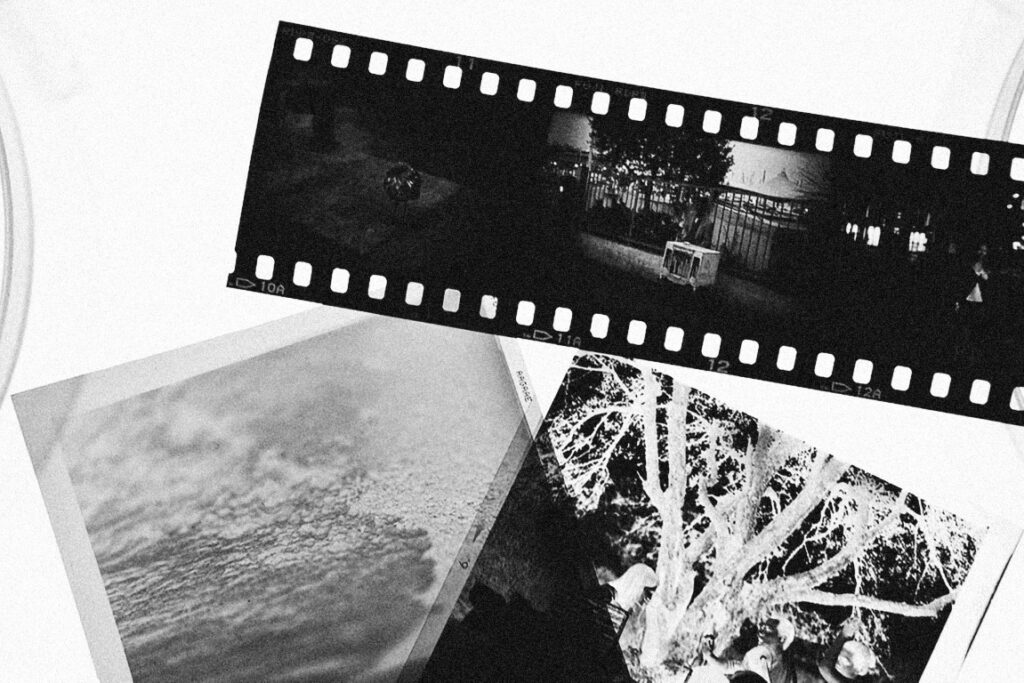
A classic choice, black and white film delivers a timeless, often dramatic aesthetic. It excels at translating the world into a broad tonal spectrum from deep blacks to bright whites. Popular options like Ilford HP5 Plus and Kodak Tri-X have long been favorites among photographers. However, given the XA1’s fixed shutter speed, lower ISO films like Ilford Pan F Plus 50 could also provide stunning results, particularly in well-lit conditions.
Color Negative Film
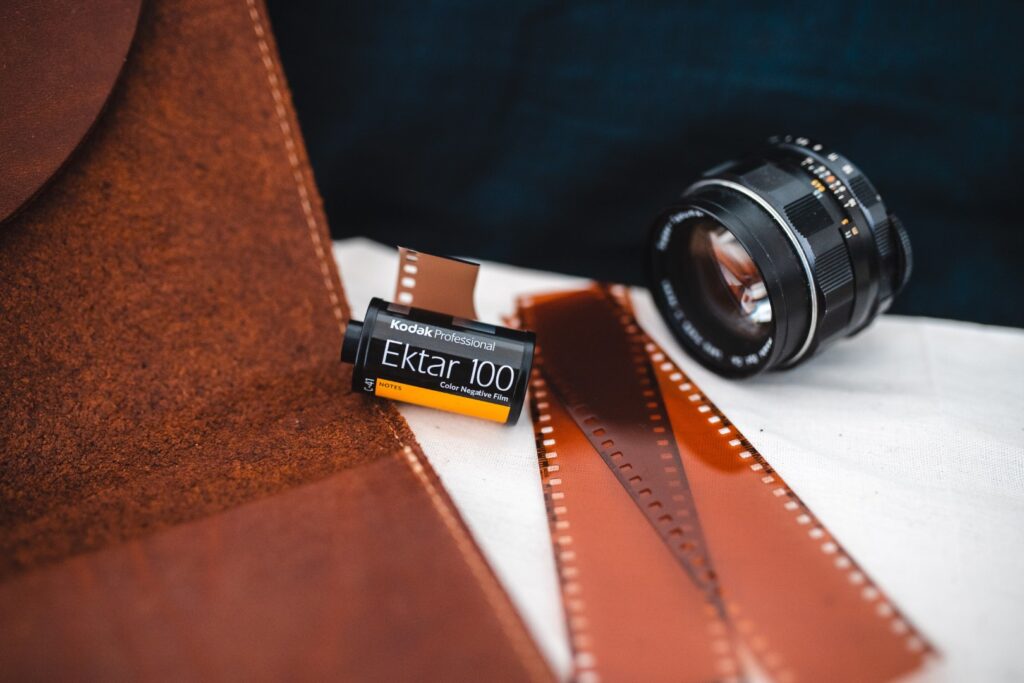
Color negative film is beloved for its capacity to capture a broad spectrum of vibrant colors. It’s generally forgiving when it comes to exposure errors, making it a great choice for those still mastering the art of exposure. Kodak Portra and Fujifilm Pro 400H are often lauded for their color reproduction. For the XA1, films like Kodak ColorPlus 200 may be an excellent choice, given its flexibility and broad compatibility with various lighting conditions.
Slide Film
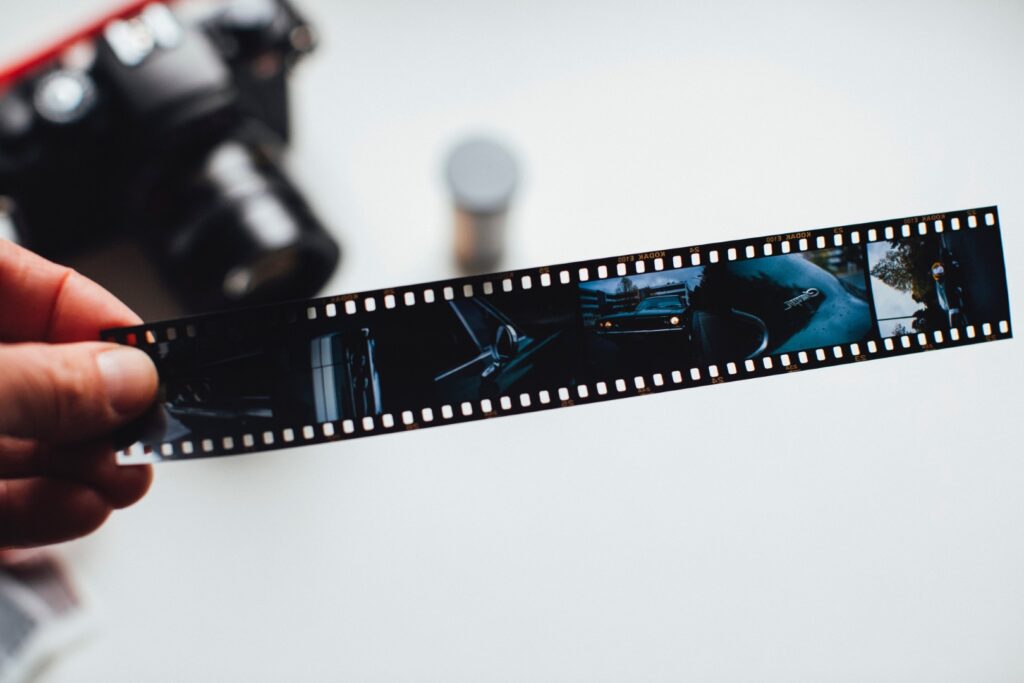
Slide film, also known as reversal or transparency film, creates a positive image on a clear base. This film type is acclaimed for its vivid colors, fine grain, and high contrast but requires precise exposure. Given the Olympus XA1’s fixed shutter speed, slide film might present a challenge, but experimentation is always encouraged in the world of film photography.
Considerations When Choosing a Film for Your Olympus XA1
Selecting the perfect film for your Olympus XA1 involves more than just picking a black and white or color film. It involves understanding the nuances of film speed, appreciating the aesthetic qualities that different films can provide, and recognizing the implications of film development and scanning. In this section, we’ll delve into these factors to help you make an informed decision for your next photographic adventure.
Film Speed
In film photography, the ISO (or film speed) significantly influences exposure and graininess, making it a crucial element to consider. The Olympus XA1 comes with a built-in switch that allows users to select between two ISO settings – 100 and 400. This feature becomes particularly noteworthy in the context of the camera’s unique shutter mechanism. The XA1 has a programmed electronic shutter system, automatically adjusting between 1/30s at f4 for low light situations and 1/250s at f22 for bright conditions. This shutter speed coupled with the two available ISO settings, greatly determines how light or dark your images will turn out.
ISO 100 films are best suited for well-lit conditions. They offer minimal grain, high resolution, and produce sharp images. However, under dimmer light, they can result in underexposure. Kodak Ektar 100 is a good example of an ISO 100 film, celebrated for its extraordinary sharpness and minimal grain structure. If you anticipate shooting outdoors on a sunny day with your XA1, ISO 100 film is the way to go. On the other hand, ISO 400 films are adaptable to lower light conditions. They display a higher grain structure but allow more flexibility under varying light situations. Consider using films like Kodak Tri-X 400 or Ilford HP5 Plus 400 when shooting in less lit settings or during the ‘golden hours’. These films provide a good balance between sensitivity to light and graininess.
Given the Olympus XA1’s fixed shutter speeds and the choice between two ISO settings, strategic selection based on the ambient light is crucial. Use the ISO 100 setting for brightly lit scenarios and switch to ISO 400 when the light dims. With this approach, you can best leverage the XA1’s unique design and ensure well-exposed photographs across various lighting conditions.
Aesthetic Qualities of the Film Stock
While technical considerations are essential when choosing film, the aesthetic qualities of different film stocks should not be overlooked. The look and feel of your images are significantly affected by the film’s inherent characteristics, including its grain structure, color reproduction, contrast, and dynamic range.
With the Olympus XA1, you might want to explore a variety of film stocks to capitalize on its compact and user-friendly design. For instance, a classic film like the Kodak Gold 200 offers warm and vibrant colors, perfect for capturing sunsets or autumn landscapes, keep in mind that with an ISO 200 setting the Olympus XA1 will slightly overexpose. If you’re interested in more muted, nostalgic tones, consider trying out the Fujicolor Pro 400H, known for its subtle pastel color palette and softer contrast.
Developing and Scanning Film
Once you’ve shot your film, the next step is to develop and digitize it. There are two main routes you can take: doing it yourself at home or sending it to a professional lab. Home development gives you complete control over the process, allowing you to tweak factors like development time and temperature. For the Olympus XA1, which uses 35mm film, you’d need a developing tank and chemicals (developer, stop bath, and fixer) for black and white film. Color film requires different, often more complex, chemicals and process. It’s a more hands-on approach and can be a fulfilling aspect of the film photography process.
Scanning your negatives at home requires a film scanner. These range from affordable, lower-resolution models to high-end scanners that offer greater detail and dynamic range. Again, it’s all about the level of control and quality you desire. Professional labs offer convenience and consistent results. They have high-quality developing machines and scanners, ensuring your film is handled with care and professionalism. Some labs even provide online galleries for easy digital access to your images.
The choice between home developing and lab developing depends on your budget, time, and passion for the process. Both methods have their merits, and exploring each can deepen your understanding and enjoyment of film photography.
Top Film Choices for Olympus XA1
Selecting the perfect film can elevate your photographs to new heights. Considering the unique specifications of the Olympus XA1, with its fixed ISO settings of 100 and 400, here are some of the best film choices that can help you capture stunning images with this classic camera.
Color Films
Kodak Ektar 100: Known as the world’s finest grain color negative film, Kodak Ektar 100 is a top choice for daylight shooting. Its high saturation and vivid colors make it fantastic for landscapes, travel photos, and fashion photography. With the Olympus XA1’s fixed aperture and shutter speed settings, Ektar 100 can render incredibly sharp and vibrant images under well-lit conditions. Check current prices here.

Kodak Gold 200: If you’re venturing into color negative films, Kodak Gold 200 is a brilliant choice. Known for its warm color palette and good grain structure, this film works well for a wide range of subjects, from street scenes to portraits to landscapes. With its reasonable sensitivity to light, it pairs perfectly with the Nikon L35AF for diverse shooting scenarios, offering a good balance between quality and affordability. Check current prices here.

Kodak Portra 400: This film is a versatile option for varying light conditions. Kodak Portra 400 is renowned for its excellent skin tones and natural colors, making it a favorite among portrait photographers. However, its versatility also extends to a variety of lighting conditions and subject matter. The grain is very fine for a 400-speed film, providing a good balance between sharpness and light sensitivity. When shooting in cloudy or less than optimal light with the Olympus XA1, Portra 400 will be a reliable choice. Check current prices here.

Black and White Films
Black and white films offer a timeless aesthetic that brings out the texture and tonal contrast in your images. Here are three films that can wonderfully enhance your Olympus XA1’s photographic potential, each with its distinct charm:
Ilford FP4 Plus 125: Technically a little outside the ISO settings of the Olympus XA1, Ilford FP4 Plus can still work very well, especially on brighter days or scenes with plenty of contrast. This film offers high resolution, fine grain, and a wide tonal range, producing images with excellent sharpness and detail. It’s a versatile film suitable for a range of photographic subjects. Check current prices here.

Kodak TMax 100: With the finest grain structure among Kodak’s T-Max line, TMax 100 is a great choice for outdoor photography under good lighting. This film offers high sharpness and a broad tonal range, resulting in detailed and balanced images. Its fine grain can bring out the best of the Olympus XA1, particularly when capturing landscapes or architecture. Check current prices here.

Kodak Tri-X 400: An iconic film loved by street and documentary photographers, Kodak Tri-X 400 is renowned for its rich contrast and flexible exposure latitude. Even with its high speed, this film delivers a reasonably fine grain and excellent sharpness. It’s a good choice for the Olympus XA1 when shooting in varying light conditions. Check current prices here.

Slide Films
Fujifilm Provia 100F: As mentioned earlier, Provia 100F is a fantastic choice for slide film enthusiasts. This film offers a realistic and vibrant color palette along with high sharpness and contrast, making it ideal for landscape or portrait photography. With the Olympus XA1, it can deliver impressive results when shooting under bright lighting conditions. Check current prices here.

Kodak Ektachrome E100: This film is renowned for its incredibly fine grain, clean colors, and great tone scale. Its color palette is not as saturated as some other slide films, giving it a more natural feel. It’s excellent for landscapes and portraits, producing particularly beautiful skin tones. In the Olympus XA1, the Ektachrome E100 would be best used in well-lit, outdoor scenarios to ensure optimal exposure. Check current prices here.

Budget-Friendly Film Alternatives for the Olympus XA1
Fomapan 400 Action: This black-and-white film is not just budget-friendly but also remarkably versatile. It’s known for its impressive tonal range and contrast, handling different lighting conditions with ease. Given the Olympus XA1’s aperture settings and shutter speed, the Fomapan 400 can deliver great results, especially in overcast or lower light conditions. Check current prices here.
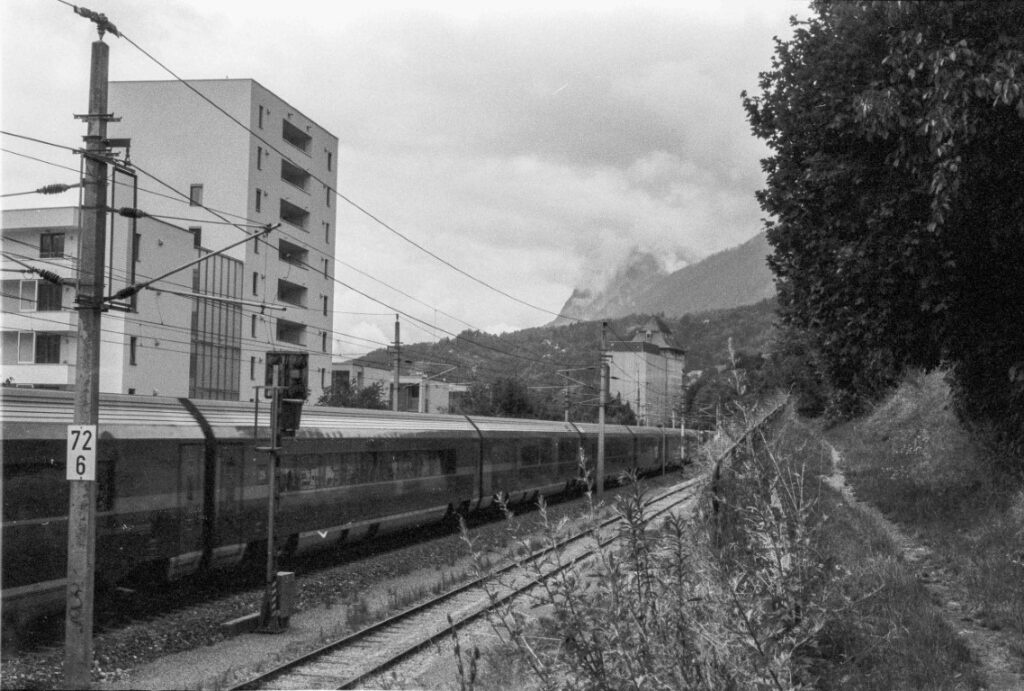
For more Foma 400 images, check out my Fomapan 400 Flickr album. We’ve captured our firsthand experiences with Fomapan 400 in this YouTube video, covering everything from shooting to self-developing the film. Take a look for a comprehensive look.
Kodak ColorPlus 200: While technically outside the prescribed ISO settings for the Olympus XA1, the Kodak ColorPlus 200, with its warm and vibrant hues, can be an exciting film to experiment with. Do note, this film will overexpose slightly when set to ISO 100 on the XA1. While this isn’t necessarily a disadvantage (some photographers prefer the look of slightly overexposed ColorPlus 200), it’s something to be aware of. Remember to consider your lighting conditions to make sure this film choice will work for your specific setting. Check current prices here.
Frequently Asked Questions about Using Film in the Olympus XA1
Here are the answers to some of the most frequently asked questions about using film in the Olympus XA1. We hope these will help you understand your camera better and guide you towards capturing stunning photographs.
Can I use any other ISO film in the Olympus XA1 apart from 100 and 400?
Technically, yes, you can use other ISO films in the Olympus XA1, but the camera is primarily designed to work optimally with ISO 100 and 400 films. This is due to the camera’s fixed ISO setting switch that allows you to select either of these two options, enabling the light meter to accurately adjust the aperture for optimal exposure.
If you decide to use a different ISO film, remember that it will either be overexposed (if lower than 100) or underexposed (if higher than 400) compared to the selected ISO setting on the camera. This might lead to an image with altered brightness and contrast levels. While this could lead to some intriguing and creative outcomes, it’s best to be mindful of these effects when shooting.
How do I load and unload film in the Olympus XA1?
Loading and unloading film in the Olympus XA1 is a straightforward process. You open the back cover, place the film cassette in the chamber, and pull the film leader to the take-up spool. Close the back, and wind the advance wheel until it stops. When the film is finished, you manually rewind it using the rewind crank.
Can I use slide film in the Olympus XA1?
Yes, you can use slide film in the Olympus XA1. However, keep in mind that slide film typically has a narrower exposure latitude than negative film. This means that it requires more accurate exposure control, which might be a challenge with the XA1’s limited manual control. For optimal results, use slide films rated at ISO 100 or 400 and shoot in good lighting conditions.


